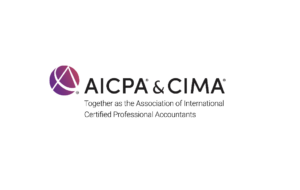OK was once the country's largest retailer and the first-shop for thousands of South African shoppers. This giant retail business with twelve thousand employees was given away to its rival, Shoprite, for a token amount of one rand.
When Sam Cohen and Michael Miller opened the first OK Bazaar in 1927 they wanted to pioneer the self-service concept in South Africa. Over the next 40 years, the company opened over 100 stores in the central business districts of towns and cities across the country. By 1970 OK Bazaars was the preferred shopping choice for thousands of South African families and the country’s most trusted retail household brand.
But OK was a family business and vulnerable to a takeover. The retailer’s size, market share, customer base and profitability attracted investors. In 1973, South African Breweries bought out the controlling interests of the Cohen and Miller families in what was then the largest retail transaction in South African history.
It’s ironic that, only three months later, South Africa’s first suburban shopping mall opened in Sandton near Johannesburg and the face of retailing in the country began to change. South African shoppers changed their buying habits as shopping malls exploded across the country.
Retailers responded by cancelling their CBD leases, moving from the “high streets” to the malls, and revamping their business models. New retail offerings emerged with focused product ranges, specialising in groceries, or clothing, toiletries or furniture. Profits of the old-style retailers in the centre of town dwindled. Many traditional high-end department stores closed down and the country’s central business districts began to decline.
OK Bazaars, however, did not move to the malls. It remained a high-street general dealer, offering a range of groceries, clothing, furniture and home appliances. For nearly 20 years, in spite of declining turnover and falling profits, OK management carried on running their stores in the country’s declining CBDs. In 1992, OK’s annual report blamed a 27 percent drop in earning on the “current recession, escalating unemployment, and continued socio-political unrest” – in a year where its competitors saw their earnings growing.
In 1995, when OK Bazaars reported a R30 million operating loss, SAB put OK up for sale. For the next three years, local and international buyers came to look, but no deal was struck. Meanwhile, the losses continued.
In 1997, OK’s 187 department stores and 22 Hyperamas, on the brink of insolvency, were sold to Shoprite for a token amount of R1.
The value destruction of the biggest retail transaction in South African history to R1 led to questions from Breweries shareholders. Should Breweries have bought OK in the first place, and were they wrong to now give the business away for R1?
There was also speculation that Shoprite had bitten off more than it could chew. OK was tied into long-term leases in the CBDs of many towns in the country, and Shoprite was required to take over responsibility for millions due to suppliers in return for inventory that was suspected to be slow-moving and obsolete.
However, Shoprite CEO Whitey Basson took on the challenge of recovering OK Bazaars. He was unimpressed with the OK leadership and team culture. “There was no integral respect, guidance, love or working together between the people, the stakeholders and management. As a result, decisions are taken in the interests of one or two groups, but seldom for the good of the business as a whole,” he said. He jokingly commented, “We paid one rand for this business, and we paid too much”.
He revealed several operating problems:
- Poor financial controls: with 14,000 people on the payroll, the company had no proper clock card system or other process for monitoring attendance and timekeeping.
- Costs were too high. OK was the only major retailer which ran its own advertising department instead of using an agency. The OK advertising department employed 120 people. Shoprite had six.
Basson also reviewed OK’s retail productivity metrics: turnover per square metre for all stores (the trading density ratio); the stock turn by unit and department for inventory; and turnover per employee or employee hour for staff.
These key operating figures revealed that OK’s three major resources (stores, merchandise and people) were badly managed, under-utilised and poorly controlled in comparison to Shoprite.
There was evidence of three classic symptoms of bad management:
- Firstly, an autocratic, complacent inflexible leadership, with no team culture.
- Secondly, poor governance in the form of a passive board, doggedly pursuing wrong strategies and not reacting urgently to losses.
- Finally, a weak finance function with no information systems, no daily operating measures, inadequate attendance controls, weak cost management, and poor or absent forecasting.
Basson concluded that OK could not be fixed as a separate stand-alone business. It had to be broken up and absorbed into Shoprite. He acted swiftly and decisively. Retrenchment packages were offered to most of the senior staff. The advertising department was closed and integrated with Shoprite. Improved information systems and controls reduced shrinkage by R100 million. Loss-making stores were closed or rebranded. The non-core OK Furniture was set new targets with the implied promise of a future listing.
In 1999, just two years after taking control, Shoprite reported that OK had returned to profitability with pre-tax earnings of R5 million. The OK brand exists today as a furniture, appliance and carpeting chain store, and for certain food and liquor franchises – a shadow of its former self.
The R1 sale and subsequent return to value of OK contains a cautionary tale for South African businesses: Get ahead of change, not behind it; work on your teams; work on your management; and keep tight controls on costs and governance.










